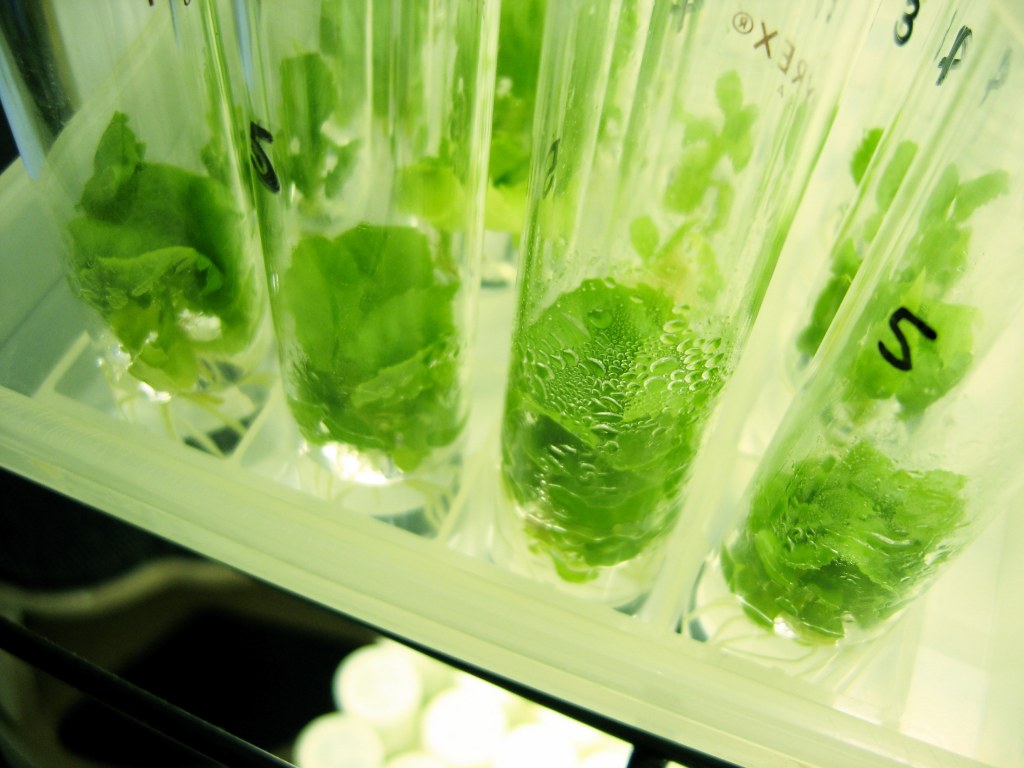The agriculture sector is constantly looking for innovative and modern techniques to increase crop efficiency and produce high quality and safe food, feed, and fiber at affordable prices. Recently, tissue culture micropropagation is increasingly used to reproduce crops that are difficult to propagate by conventional methods such as seeding or cutting. Micropropagation is the practice of rapidly multiplying stock plant material to produce a large number of progeny plants, using modern plant tissue culture methods.
Tissue culture micropropagation is a collection of techniques used to maintain or grow plant cells, tissues, or organs under sterile conditions on a nutrient culture medium of known composition. Success in producing large numbers of plantlets requires the most sterile facility, an ideal cultural media, and an experienced expert to oversee stringent protocol. An article by Persian daily Forsat-e Emruz investigates the advantages and challenges of investing in the science-based industry.
Advantages and Limitations
Tissue culture micropropagation offers many unique advantages over other propagation methods, including:
- Production of more robust plants, leading to accelerated growth compared to similar plants produced by conventional methods;
- Producing rooted plantlets ready for growth, saving time for the commercial grower when seeds or cuttings are slow to establish or grow;
- Production of disease-free plants;
- Re-production or cloning of one plant with particular characteristics and traits beneficial to optimal growth and success;
- Multiplying plants which produce seeds in uneconomical amounts, or when plants are sterile and do not produce viable seeds or when seeds cannot be stored;
- And, producing a greater number of plants per square meter while the propagules can be stored longer and in a smaller area.
Despite the many advantages, high production costs, labor-intensive process, requirement of sophisticated facilities and skills and the vulnerability of progeny plants to infections are among major limitation in the use of micropropagation.
Unavailability of immediate market for the produced crops and the high cost of export and transportation are among other limitations while considering investment in the sector. Experts believe micropropagation is not economically feasible when practiced in small areas, suggesting the establishment of large-scale micropropagation plants for generating reasonable profits.
Market Scenario
A number of companies in Iran are currently active in tissue culture micropropagation. Experts believe there are many opportunities in the sector for production and export of crops such as ornamental flowers. The global market for tissue culture micropropagation is estimated at about 1 billion plants per year. In-depth study of domestic and international markets and proper estimation of the costs prior to establishing laboratories could help reduce the investment risks. Experience and skill is also a driving force in micropropagation businesses. Responsible and seasoned laboratory and operations managers can enable the companies to survive through the early development period.
Another way by which the micropropagation laboratories can generate income is by providing technical training and information in the area. Micropropagation protocols, offering a comprehensive and step-by-step guide to micropropagation techniques for various plant species are generally compiled by researchers in the field and offered to researchers, commercial companies, biotechnologists and students interested in micropropagation.
Establishing a Micropropagation Plant
The main procedures for establishing a micropropagation plant include the choice of explants, disinfection and elimination of contaminants from the explants, preparing the culture condition like ingredients, light and temperature and acclimatization of plantlets.
The minimum area required for setting up a micropropagation laboratory is about 50 square meters of nursery space and an adjacent workshop to house the equipment. The minimum capital required to set up a medium-sized micropropagation laboratory in Iran is estimated at about 1.5 billion rials ($45,500 at market exchange rate). The provinces of Gilan, East-Azerbaijan and Isfahan and their neighboring provinces are deemed suitable for establishing micropropagation plants since the Agriculture Biotechnology Research Institute of Iran (ABRII) has its main headquarters in the three provinces.
As many technologies advance to the point of becoming routine adjuncts to plant production, plant tissue laboratories will find many new avenues for their products and services. Micropropagation organizations have in place the facilities, skilled staff and personnel capable of performing many services in addition to the standard production of plantlets.
In an ever changing and highly competitive market, organizations will benefit from an appraisal of their technical assets and regular investigations into profitable applications of those assets to new markets and customer needs from whichever industry they may arise.


